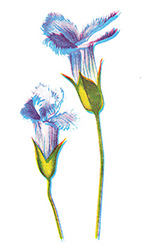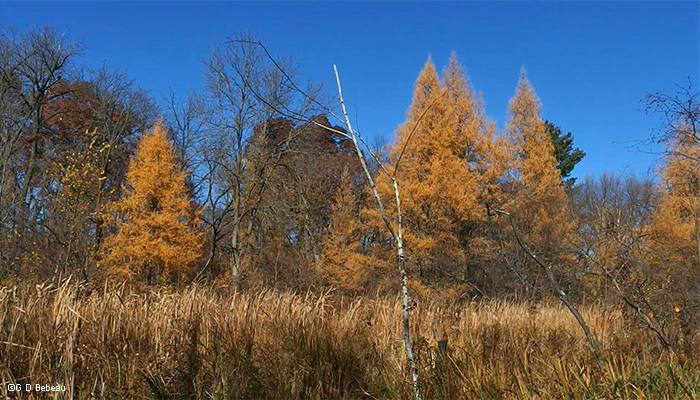Fall 2022 VOL. 70 No. 3
THE FRINGED GENTIAN™
A PUBLICATION OF FRIENDS OF THE WILD FLOWER GARDEN, INC.

Could climate change turn Minnesota into the new Kansas?

Dr Lee Frelich, Director, University of Minnesota Center for Forest Ecology presented convincing data to answer this question at our Annual Membership Meeting on September 18 at Sumner Library.
The global average surface temperature has increased 1.8°F in the last 50 years, reversing a 5,000-year cooling trend and CO2 emissions are at 417ppm, a 3 million year high. In the worst-case scenario, average summer temperatures will be 12°F higher towards the end of the 21st century. Minnesota’s climate will become like Manhattan, Kansas. Using a more conservative CO2 emissions model, our state will experience increased average summer temperatures of 4-5°F and we will be the new Des Moines, Iowa. [figure 1]
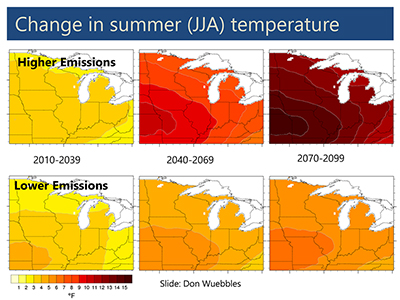
Minnesota uniquely has 3 biomes: grasslands to the west and south-west, temperate forests (maple, oak, basswood, yellow birch), a diagonal edge from the southeast to the northwest, and the boreal forest (spruces, balsam fir, red and jack pine, quaking aspens and paper birch) in the Arrowhead region extending towards the southwest.
Dr. Frelich’s study of 1700 trees in northern Minnesota, compared growth of the boreal forest’s balsam fir and white spruce to the temperate forest’s red and sugar maples. As the average summer temperatures increased in the early 2000s, the growth rate of the fir and spruce decreased, and the growth rate of the maples increased. The temperate tree species are now invading the boreal forests and this invasion will continue to accelerate as warming continues. [figure 2]
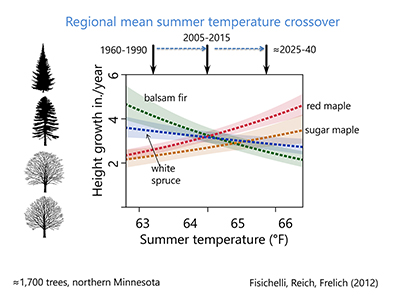
Climate changes are also influenced by precipitation, evaporation: water from lakes, rivers, and groundwater returning to the atmosphere as water vapor -and transpiration, which is evaporation from plants. If the precipitation to potential evapotranspiration (P/PET) ratio exceeds 2; more water is held in the land and the transitions of biomes is slowed. In that scenario a temperate forest in a warming area may continue as a forest. However, if evapotranspiration is greater than precipitation and the ratio is -2 or less, temperate forests are pressured to transition to grasslands.
With warming, boreal forests will transition to temperate forests and temperate forests will evolve to grasslands. By 2070 in the high emissions scenario, Minnesota will be mostly grassland and the Arrowhead area will be temperate forest. In the more conservative model, Minnesota loses its boreal forest and will be mostly temperate or broadleaf woods with a mixed broadleaf boreal forest in the very northeast. As temperatures increase, the risk of large fires will increase. Dr Frelich quoted a 600% increase of weeks of fire risk by mid-century. [figure 3]
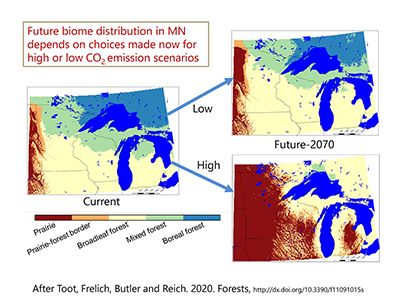
What can we do? Eat more plants, develop more energy efficient cars and buildings, promote alternative energy sources, like solar and wind, stop deforestation and plant trees.
With climate change, the Twin Cities will lose 5 tree species, 15 species will be reduced, 18 species will remain and increase, and 25 species would potentially become neo-natives. This would be an increase from 38 to 58 “native” species in the metro area. Dr Frelich recommended planting these neo-natives. [figure 4, photos in figure 5 and 6]
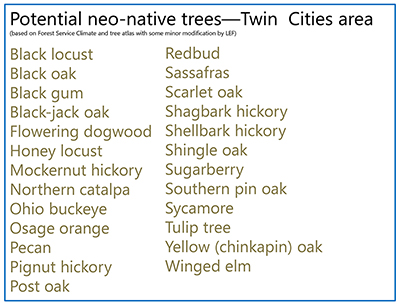
Coincidently, the Star Tribune published an article on local urban reforestation on the day of this talk. The 2011 tornado in North Minneapolis reduced the canopy to less than 30%. The MPRB has planted 40,000 trees through its Tree Preservation and Reforestation Levy which ended in 2021, Minneapolis has committed 1 million dollars from their Covid relief fund to plant 18,000 trees over the next 2 years and Minneapolis through the Tree Trust has supplied 20,000 trees to private residences over the past 17 years.❖
Text by Jennifer Olson
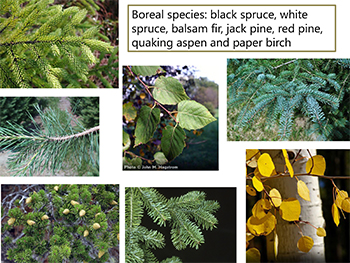
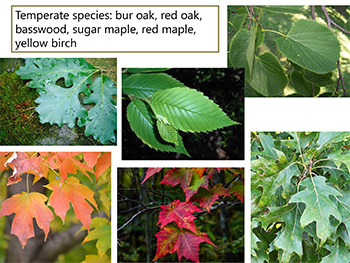
A New Friends History
Seventy Years of the Friends is a new book that documents the activities of Friends of the Wild Flower Garden and the events happening in the Eloise Butler Wildflower Garden from the founding of the Friends in 1952 until 2022. Details at this link. Available in pdf format and a limited number of printed copies.
Letter from the President
Dear Friends,
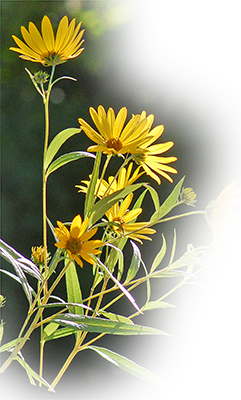
The upland meadow is now blooming with color, mostly yellows and purples. While the bright colors capture my attention, it’s really to attract the pollinators to ensure the plant’s survival.
The yellows pop out at me, but so many of them are composite flowers with their yellow rays; what are their names? With my phone app I can quickly take a picture and get an identification. Unfortunately, I’m missing the experience with that plant – critically assessing the flower, stem, leaves, and its habitat to solve the question who are you?
I love the blooms, but I’m no expert. Eloise Butler referred to Asa Gray’s Manual of The Botany of the Northern United States first published in 1848 targeted towards botanists. [see note box below] Being a non-botanist, I need a wildflower field guide. The first one published in America was How to Know the Wild Flowers by Mrs. William Starr Dana in 1893; organized by color it sold out in five days. Many wildflower field guides have been published since including Roger Tory Peterson’s Field Guide to Wildflowers of the Northeastern and North-central North America which is organized by color then shape and structure; then highlighting the differences within family groups with his famous arrows indicating important field marks.
Botany in a Day, The Patterns Method of Plant Identification by Thomas J. Elpel focuses on initially learning eight major families – mint, parsley, mustard, pea, lily, grasses, rose, and aster. Knowing these patterns, 45,000 species will fall into these eight families. However, by focusing on these patterns, you hone your observations to the shape of the stem, the arrangement of the sepals and petals, and the attributes of the leaves; it’s a comprehensive view of the plant, not limited to color. The one hour version by the same author is Shanleya’s Quest for ages 9 to 99.
I’m learning to use Newcomb’s Wildflower Guide. It’s easy to carry and you answer five questions. Is the flower regular, irregular, or indistinguishable? If regular how many petals does it have? Is the plant a wildflower, shrub, or vine? If a wildflower, does it have no leaves, basal leaves only, alternate leaves, or opposite or whorled leaves? The fifth question is leaf type: no leaves, leaves entire, toothed/lobed or leaves divided? The result is a three digit number that in the locator key directs you to the page with your plant. Both the above books are in the Shelter.
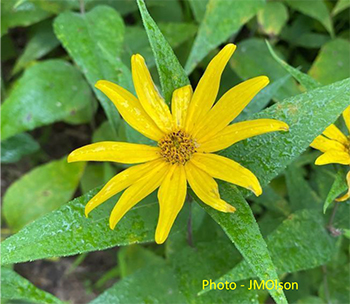
It’s a regular flower and has more than 7 regular parts = 7. It’s a wildflower (not a shrub or vine) and its leaves are opposite= 4. The leaf is entire with no teeth or divisions = 2. The number is 742 and the Locator Key sends me to page 386. Further qualities: yellow head, lanced shape leaves, and stem slightly rough – identifies the Woodland Sunflower! A jewelweed would be 133 (irregular flower, alternating leaves that are toothed) and flower is long-stalked.
I feel rewarded solving the puzzle by studying all the parts which nature has evolved into a unique plant! I can confirm it with my Eloise ButlerWild flower Garden & Bird Sanctuary 3rd Edition Plant Identification Guide, available on the Friends’ website at this link.
See you in the Garden❖

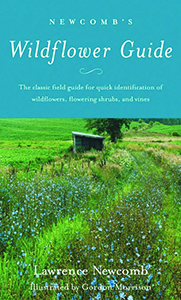
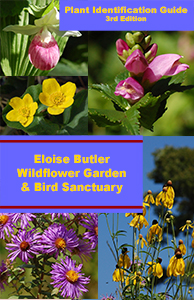
The sunflower at the beginning of the President's Letter is Giant Sunflower, Helianthus giganteus. It was originally added to the Garden by Eloise Butler in 1911 and it is found in the wild in 50 of Minnesota’s counties. Photo G D Bebeau.
Archive of previous President's Letters.
Garden Curator's Notes
Susan Wilkins' comments appear courtesy of the MPRB.
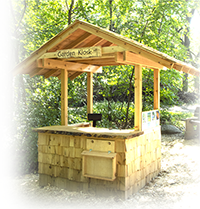
Greetings. It has been a busy and beautiful season at the Garden this year. Public program attendance has been high, with programs like Garden Story Time, Early Birders, Quaking Bog Tours, and Night-themed Walks drawing 20, 30, 40 people for many sessions.
Garden Story Time tops the charts this year with more than 60+ people often attending this season. Clearly the Garden provides so much nourishment and enrichment for visitors in a variety of ways. Special paid tours were re-launched this summer after a pandemic pause for two years and groups are enjoying their specialized programs with Garden Naturalists as a result. We have had the great fortune of having a talented staff this season, including the staff working in the field and also with the education and visitor services program. Thank you to Elise Jacobson (Natural Resources Specialist) along with Louisa Brody and Nicholas Purcell (Horticulture Support Interns) for their fabulous work tending to the Garden this season. You will have the pleasure of reading an article from these three staff in this edition of The Fringed Gentian™.
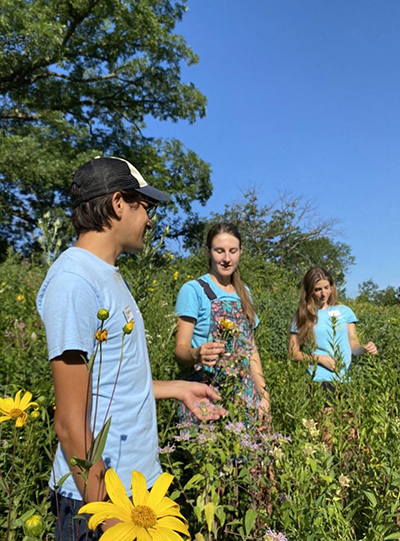
Thank you to Summer Badawi (Education Program Lead) along with Charlotte Cowdery, Erin Dietrich, Mariah Hanson, Kimberly Ishkov, Tammy Mercer, Maria Montero (Garden Naturalists) for all of your work serving visitors through the formal and informal education programming at the Garden. This group of educators has done a tremendous job of providing high-quality programming and engaging visitor experiences this season. Last but not least, thank you to the four Garden Naturalists who assist as needed with shifts and programming, including: Sophie Bishop, Erin Dietrich, Jodi Gustafson, and Claire Steinhouse. As you can see, it takes a small village to provide a high-quality experience for visitors at the Garden and to keep the Garden landscape healthy and in good form.
Also this season, docent volunteers have returned! This long-standing program, developed and coordinated by the Friends of the Wild Flower Garden, weathered the pandemic and has returned with a cheerful team of nearly 30 volunteers ready to greet and assist visitors at the Garden. Thank you to Melissa Hansen, a volunteer herself and coordinator of the program, for her collaborative spirit and hard work, working together to launch this program this season.
The new kiosk at the front gate to the Garden has been well received and serves as a wonderful location for visitors to be greeted by volunteers. This season, docent volunteers received training and then jumped right into serving visitors in this location without missing a beat! We are excited about this new space and the way it affords visitors to learn a bit about the Garden and gather resources for visiting before entering. And for those visitors who are seeking solitude, we completely understand! Volunteers have been trained to lean back and see if visitors want to engage before initiating a conversation. At the Garden, we continue to do our best to meet the needs of visitors to this free, public botanic garden in the heart of the Twin Cities so that it is a welcoming space for all.
Enjoy these fleeting days of autumn and may you find moments to touch down deeply with nature in your everyday lives in the season ahead.❖
The new Garden entry kiosk. Photo - Bob Ambler.
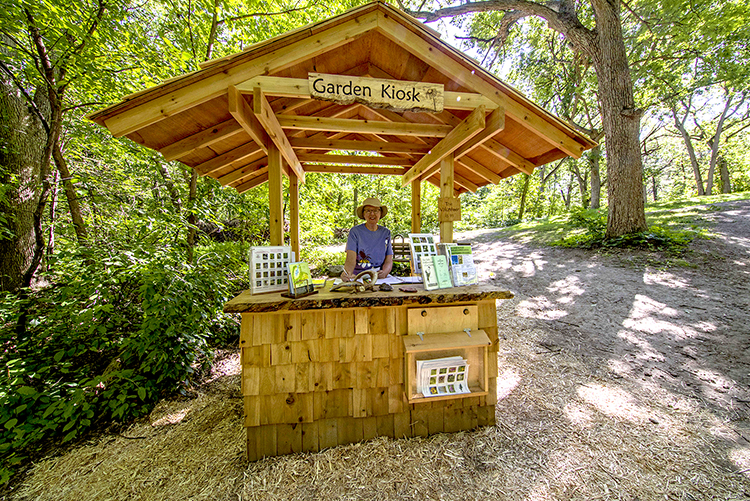
Read her previous letters here.
Green Darner Dragonfly
by Diana Thottungal, Naturalist
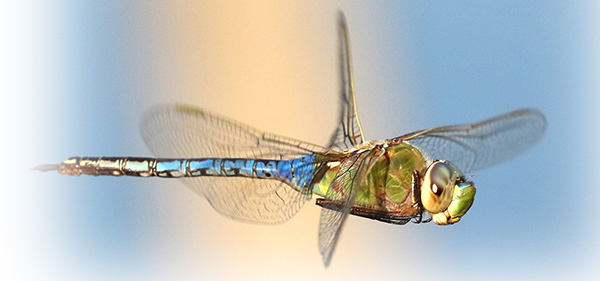
Fall is here and so is migration season. Birds and Monarch butterflies are well known migrators partly because they fly in swarms. They are also large and colorful, which also makes them easier to observe. Here is something a little bit different.
The green darner (Anax junius) dragonfly also heads south in the fall when the daytime temperature is in the vicinity of 45 degrees. However, they do not come back in swarms, making them more elusive. It will take at least three generations for the offspring of a green darner to make it back to its grandparents' southern breeding ground during their annual migration. Attached micro-radio transmitters have shown that they can travel around 10 miles per hour and go 87 miles a busy day.
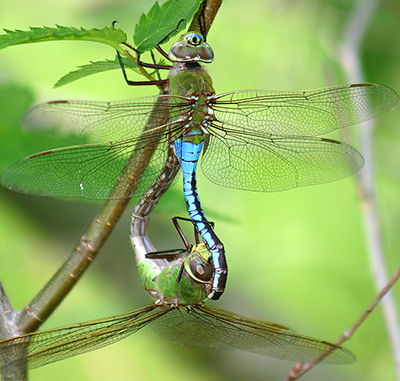
The migration of the green darners is not without its perils. Hawk Ridge in Duluth is named for its migrating raptors. Yes, they eat the migrating insects including green darners, especially kestrels. During very hot sunny days they raise their abdomens in order to be perpendicular to the Sun. That way they absorb less heat. Neat.
In addition to the multi-step reproductive cycle, the green darner dragonfly has an interesting way of eating. It shoots its mouthparts out in the direction of its intended prey. Not very far, just as though it is turning its mouth inside out and sideways so the jaws are effectively left and right instead of top and bottom.
They are also very active hunters. They close on the hapless victim with a vigorous snap. What are these hapless victims? With great frequency it is a mosquito or a mosquito larva. Since the dragonfly larvae are aquatic, they definitely help.❖
Editors Notes: Dragonflies belong to the class Insecta and the Order Odonata which includes both dragonflies and damselflies. Dragonflies tend to be larger and have large eyes which meet in the center of their heads. The wings of dragonflies are transparent with assorted markings. They are not narrow at the base and the forewings and the hindwings are each shaped differently. When at rest, the wings are outspread. Damselflies are generally smaller than dragonflies and have a more slender body. Their eyes are widely separated, and they hold their wings together above their body when at rest. [Source - Minnesota DNR]
Below: Green darner at rest - wings outspread. Photo by Chuck Evans Mcevan under Creative Commons License CC-BY-3 Photo
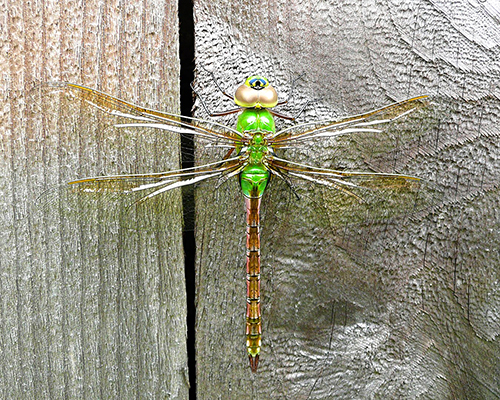
Photo top of page - common green darner hovering over a pond. Photo by Peter W. Chen under Creative Commons License CC BY-SA-4
Inaturalist reports that 148 different dragonfly and damselfly species have been observed in Minnesota.
Inside the Quaking Bog
The History and Future of Minnesota’s Southernmost Tamarack Swamp, By Lauren Husting
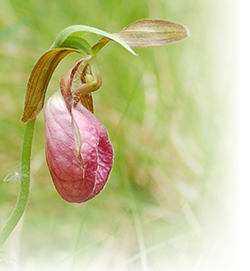
If you have walked through the Quaking Bog in recent years, you have certainly noticed the changes it has undergone, both in ecosystem and in accessibility.
While glossy buckthorn, purple loosestrife, and cattails invade above ground, the heavy sphagnum moss has been gradually overgrowing and sinking the floating boardwalk that runs in a loop around the perimeter. The compromised boardwalk has led many visitors to step slightly off trail and further damage the growing areas of the bog’s signature sundews, pitcher plants, and pink lady’s-slippers. This is not the first time in its history that the Quaking Bog has needed increased conservation, and efforts are underway to restore as much of the ecosystem as possible.
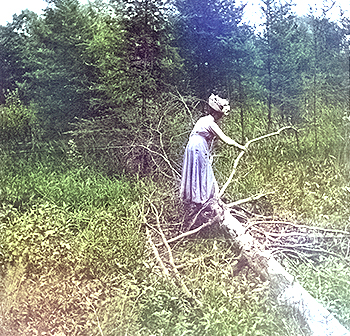
Often called a tamarack swamp, Wirth Park’s nearly 4000-year-old bog is a forested peatland defined by a thick carpet of sphagnum moss, a canopy of tamaracks and other swamp hardwoods, and acidic water fed by groundwater and precipitation. While the ground may look firm, that large mass of moss floats and wobbles on 20 feet of water, giving it the adjective “quaking.” In addition to pitcher plants, lady slippers, and the carnivorous sundews, which capture and feed on local insects, calla lilies, starflowers, and numerous frogs, toads, dragonflies, and birds. A peat bog also contains and can absorb massive amounts of CO2. Damaged or destroyed bogs release CO2 into our already polluted atmosphere; healthy bogs help control it.
Efforts to restore the Quaking Bog have occurred at many points in its history. Eloise Butler herself wrote in 1926 that …“the tamarack swamps have been drained and with the drying up of the water have disappeared the wondrous orchids and strange insectivorous plants.” In the 1980s, the organization People for Minneapolis Parks, working with the Park Board, began a ten year effort to remove buckthorn and replant tamaracks. Eventually, in 1996, the boardwalk accessing Mariana’s Isle was completed, and the Bog became a staple for visitors to Wirth Park. You can find more about these efforts in past editions of The Fringed Gentian™ from the time period, archived and available on the Friends website.
Summer school students on a field trip to the Quaking Bog. Photo Jan Thurn
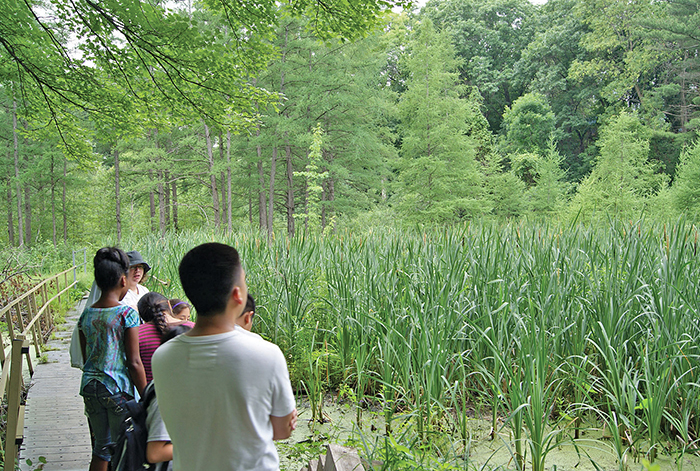
The Minneapolis Park & Recreation Board manages the Quaking Bog, and new interest has been taken in its preservation. In 2017 the MPRB’s Natural Areas Plan Phase 1 listed the Bog as a rare ecological area and efforts for its conservation as highly needed. Phase 2, released in 2021, further identified efforts to restore the 3-acre area through continued buckthorn removal.
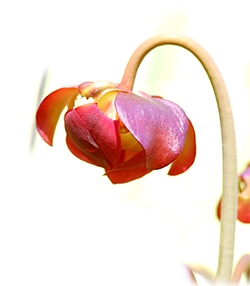
James Schaffer, MPRB Natural Resources Supervisor, feels a strong connection to the bog and coordinates efforts to restore it. Since 2020, MPRB staff have been hard at work removing the buckthorn both on the interior and perimeter of the area. Because of this, other invasives are a greater issue and the tamaracks are now susceptible to deer rubbing, so plans are in place to address these challenges.
If you are interested in helping with an advocacy effort for the Quaking Bog, with activities ranging from assisting in buckthorn management, community organization and education, and commissioner contact drives, please contact quakingbogadvocacy@gmail.com for more information. Let’s ensure the Quaking Bog has a healthy future for many years to come.❖
Lauren Husting is a Friends member and Media Communications Coordinator.
The Eloise Butler quotation is taken from her 1926 writing The Wild Botanic Garden - Early History.
Photo at upper left - Moccasin Flower (Stemless Lady's-slipper), Cypripedium acaule. Bottom right - Purple Pitcher plant flower, Sarracenia purpurea. Both photos - G D Bebeau.
Twayblades in the Garden
by Elise Jacobson, Louisa Brody, and Nicholas Purcell
“Hey, come look - I think this is an orchid!” The Field Crew was busy on an early summer morning pulling the noxious weed leafy spurge (Euphorbia esula) when we made an unexpected discovery.
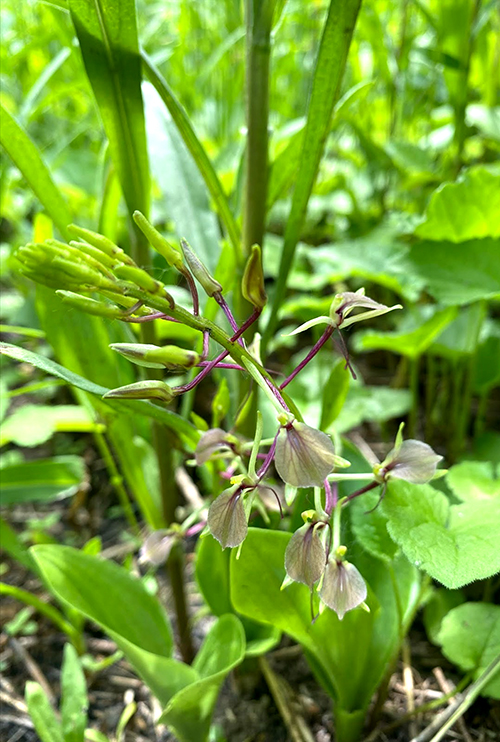
Fellow gardeners will relate to the tedium of weeding, but in the repetition we often find moments to notice the small things that evade us when we’re not looking closely. We gathered around this mysterious, delicate plant and as we looked around, we realized there were more all around us! We spent some time identifying the plant and learned that we were looking at the lily-leaved twayblade (Liparis liliifolia)—a plant that we did not recognize or know was in the Garden. The Field Crew is always up for plant research, and certainly when it involves some detective work! We set out to learn more about this plant's history in the Wildflower Garden.
The L. liliifolia was first noted in 1910 by Eloise Butler as indigenous to the area. The location and size of the original population was never specified, but the writings of Eloise indicate strong regard and enjoyment toward the plant. She wrote that “of extreme interest are the twayblades, cousins of the cypripediums. They have been introduced into the Wild Garden in Glenwood Park and have blossomed faithfully for two successive years.” She described the plants lovingly as “bits of fairy gossamer” and “the most indescribable shade of mauve.”
[The photo of Liparis liliifolia is from the Garden staff, courtesy MPRB.]
Martha Crone expanded the Twayblade population in autumn of 1935. After this time there is a gap in Garden records of the Twayblade, making it hard to know if there was a population decline or if it was simply overlooked given the small and subtle nature of the plant. Maybe by their very nature, orchids capture our imagination with their captivating beauty and fickle ways. As such, we could not let the mystery go and continued our research.
We learned from current Garden Curator Susan Wilkins and former Head Gardener Cary George that twayblades had been found in Theodore Wirth Park in the 1990s and transplanted into the Wildflower Garden by Cary George. It is likely from this transplanting that our population came from. L. liliifolia is known to be a traveler and to disperse their seeds and “move around” disturbed forested areas.
Knowing that these plants may have been here for the past 20 years, moving around the meadow via seeds and quietly blooming close to the ground, is a reminder that for as many blooms as we love to see throughout the seasons, the flowers bloom whether we see them or not!
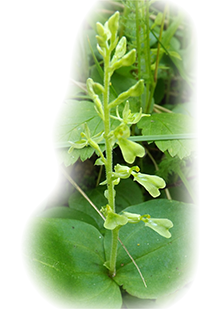
For the rest of the summer season, when we went to our planting, weeding, or other repetitive tasks we felt that we had fresh eyes from which to view the Wildflower Garden. We had a new appreciation for the small flies that pollinate L. liliifolia, the mycorhizzae in the soil that orchids require to survive, and the opportunity to research a new plant or question that came up when we took the time to pay closer attention.❖
Editors Note: The other Twayblades that were in the Garden in Eloise Butler and Martha Crone’s time were in the Neottia genus (old Listera)- N. cordata (Heartleaf Twayblade), N. auriculata (Auriculed Twayblade), and N. convallarioides, (Broad-lipped Twayblade - pictured here - Photo by Rylan Sprague). “Twayblade” refers to the paired leaves at the base of the plant.
The quotation from Eloise Butler is found in this article from 1911.
This article reviews all the orchids that are current and historical to the Wildflower Garden.
Directors Elected at Annual Meeting - September 18, 2022
Candyce Bartol, Colin Bartol, Gary Bebeau, Steve Benson, Bruce Jarvis (new) George Lawton, Jennifer Olson, Jim Proctor, J. Pam Weiner.
Thank you to retiring board members Kathleen Connelly, Lauren Husting, Sally and Steve Pundt. Lauren continues to serve as Media Communications Coordinator for the Friends.
Elected as officers by the new Board of Directors
Jennifer Olson, President
Candyce Bartol, Secretary
Gary Bebeau, Treasurer
Below: Retiring from the Board of Directors at the Annual Meeting were Kathleen Connelly (left), Sally Pundt and Steve Pundt. Kathy joined the Friends in 1989 and was president 2017-2020. The Pundts are members since 1992, Steve was president 1999-2006. In the background is the Friends displaycase. Photo by Colin Bartol.
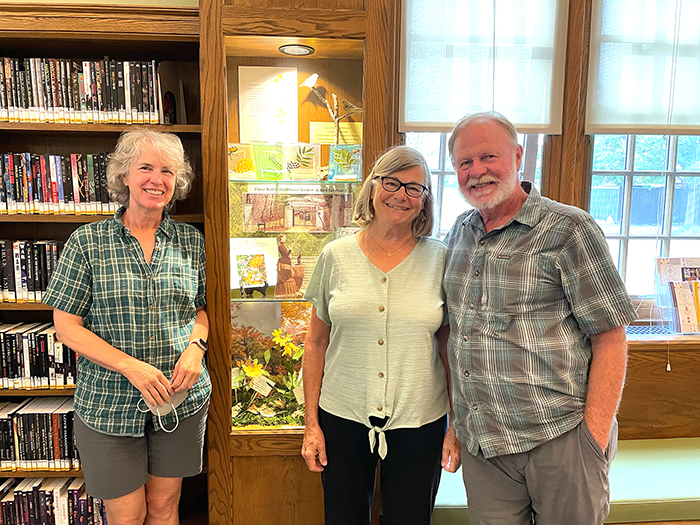
Year-end Gifting
Consider a year-end gift to support our program at the Wildflower Garden. Garden projects are the largest use of our contribution revenue. Over the last 10 years we have funded $212,000.
The two largest components of that amount were $148,000 for our portion of the boardwalk and $40,700 for plants and habitat. The Minneapolis Park and Recreation Board also provided funding for these two components.
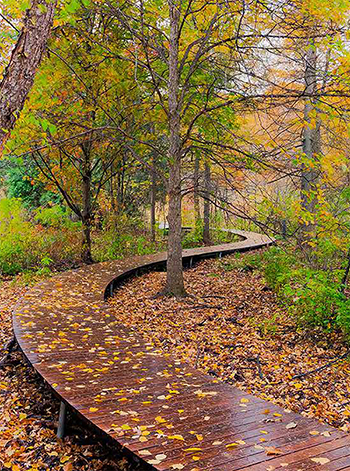
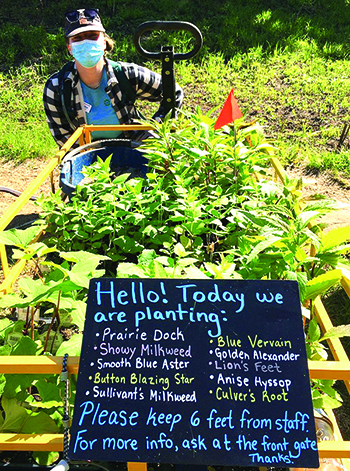
Membership Update
Member Notes - Fall 2022
Sign up for Twigs & Branches: A monthly email update from the Friends containing news from the Garden and relevant MPRB projects, as well as access to website content featuring short articles from our Board and membership. These articles are written to highlight connections of the plants, history and lore of the Eloise Butler Wildflower Garden with different time frames or outside events.
If you already are signed up for our emails, you should be getting these. If you are not here's the link to the sign-up form. The form also allows you to sign up for our Fringed Gentian™ announcements and for the Friends Invasive Plant Action Group's emails.
New members
Peggy Korsmo-Kennon — Sponsor;
Donna Schimunek — Life.
Membership information
Membership information for
1. Joining the Friends
2. Renewing your membership
Can be found on our Website Support-Us page.
Information on paying by check or by credit card is found there also.
For changes to your mailing address or email address, please contact Membership Coordinator Christi Bystedt at this email address. or Friends of the Wild Flower Garden, Membership, P.O. Box 3793, Minneapolis, MN 55403-0793.
Karol Gresser

Our longest serving member passed away on August 5th. She joined the Friends in 1967. Karol became a life member in 1999. Her passion at the Garden was birding. Her life list of Minnesota observed species totaled 380, placing her #52 on the statewide list.
The Friends Board of Directors can use your talents! We are an all-volunteer board that meets several time per year and if you have an interest in the Wildflower Garden and in helping support it and our mission of educating the public about the Garden and the natural world get more details by sending an email to to our president at this address.
Donations and Memorials Received
Memorials Received
July 2022 to September 2022
for Rob Dewey from Sarah Dewey
for Karol Gresser from Pam Weiner
for Virginia King Finlayson from Susan Kornhaber.
for Lynn Pirner from Joan Haldeman
for Mervyn Palmer from Cassandra Gilgenbach, Katherine Hanson, Diana Lengfeld, Paula Monson, Darlene Palmer, Shelly Olausen, Melinda Winegardner.
In honor of Anna Luckow from Karen Wass
In honor of Connie Smith's Birthday from Wendy Hughes and Ann Marie Bailey
Donations Received in support of our programs
July 2022 to September from
Janet Anderson, Cindy Angerhofer, John Baker, Deborah Boehm, Alan Branhagen, Gerald Brownrigg, Alan Claycomb, Stewart Corn, Ellen Ferrari, Sylvia McCollor, Daniel Monson-Bergum, Edith Miller, Susan & Douglas Nevin, Paul West.
Other means of Support
A gift in their honor can simply be a means of honoring a living person or some group
or
use this as an alternate type gift for a holiday, a birthday, an anniversary, etc. We will notify them of your gift and of how they will receive our newsletter and other communications for the year ahead. This will introduce them to the Friends and to the Garden. Use the mail-in form or the credit card link on our website 'support us' page.
You can also support our program by buying a plant identification book and note cards.
 Do you have our Plant Identification Guide? The 3rd edition has 1,950 photos of the 787 flowering plants, trees and the ferns of the Eloise Butler Wildflower Garden including many that are of historic interest. Three hundred of these books have been sold, so why not get yours!
Do you have our Plant Identification Guide? The 3rd edition has 1,950 photos of the 787 flowering plants, trees and the ferns of the Eloise Butler Wildflower Garden including many that are of historic interest. Three hundred of these books have been sold, so why not get yours!
From a buyer in New Hampshire: What a terrific collection of photos. I’m sure this guide will be a great compliment to other guides I have. From Minnesota: I love the book and will cherish it for many years to come. Credit card order or use the mail order form, both on our website here.
©2022 Friends of the Wild Flower Garden, Inc. www.friendsofthewildflowergarden.org.
Non-commercial reproduction of this material is allowed without prior permission but only with the acknowledgment to Friends of the Wild Flower Garden, Inc., the author and the photographer.
